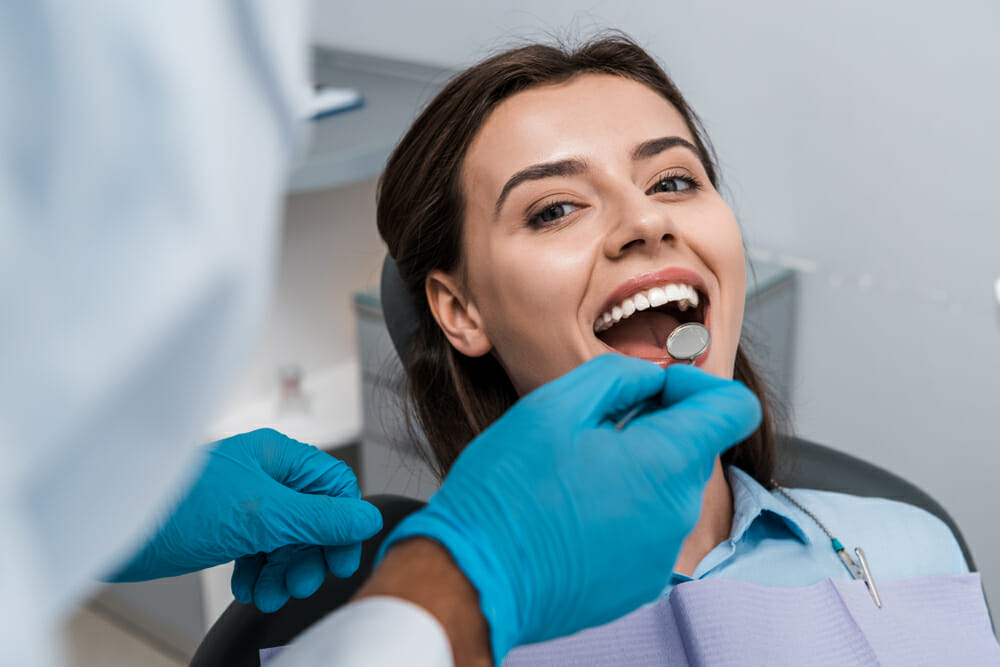A Biased View of Legacy Orthodontics
A Biased View of Legacy Orthodontics
Blog Article
Fascination About Legacy Orthodontics
Table of ContentsThe Only Guide to Legacy OrthodonticsThe smart Trick of Legacy Orthodontics That Nobody is DiscussingExcitement About Legacy OrthodonticsIndicators on Legacy Orthodontics You Should KnowLegacy Orthodontics Things To Know Before You Get This
In addition, we supply adjustable treatment routines, adaptable repayment options and a fun, delightful experience.An orthodontist is a dental professional educated to identify, prevent, and deal with teeth and jaw abnormalities. They remedy existing conditions and are trained to recognize issues that might establish in the future. Orthodontists function with individuals of every ages, from kids to adults. People typically link a best smile with health.
Malocclusion, or misaligned teeth, can lead to oral concerns, consisting of tooth degeneration, gum tissue illness, and tough or unpleasant eating. Yet not everyone is born with straight teeth. If you have a poor bite or big spaces in between your teeth, you might desire to seek advice from a dental professional concentrating on orthodontic treatment.
Legacy Orthodontics Things To Know Before You Get This
( Photo Credit Scores: DigitalVision/Getty Images) Orthodontists make use of fixed and removable dental tools, like braces, retainers, and bands, to alter the setting of teeth in your mouth. Orthodontic therapy is for oral irregularities, consisting of: Misaligned teethBite problems, like an overbite or an underbiteCrowded teeth or teeth that are too much apartJaw misalignmentThe objective of orthodontic treatment is to enhance your bite.
While you might assume of orthodontists as primarily for kids or teenagers that require dental braces, they can correct oral problems at any type of age. Orthodontists participate in college, dental institution, and orthodontic school.
All orthodontists are dental practitioners, however not all dentists are orthodontists. Orthodontic residency programs supply extensive, concentrated guideline for oral professionals. They concentrate on 2 locations: How to appropriately and safely move teeth Just how to properly direct development in the teeth, jaw, and faceOnce an orthodontist has finished training, they have the alternative to become board certified.
Not known Incorrect Statements About Legacy Orthodontics
Imbalance, or malocclusion, is the most usual factor people see an orthodontist. It is genetic and is the result of size differences between the top and reduced jaw or in between the jaw and teeth. Malocclusion leads to tooth overcrowding, a misshapen jaw, or uneven bite patterns. Malocclusion is usually treated with: Your orthodontist attaches metal, ceramic, or plastic square bonds to your teeth.
If you have just small malocclusion, you might be able to utilize clear braces, called aligners, as opposed to conventional dental braces (https://canvas.instructure.com/eportfolios/3201746/Home/The_Best_Leesburg_Orthodontist_Transforming_Smiles_Changing_Lives). Some individuals need a headwear to help relocate teeth right into line with pressure from outside the mouth. After braces or aligners, you'll require to put on a retainer. A retainer is a personalized gadget that keeps your teeth in place.
They're most usually utilized on children. They can develop added area in the mouth without needing to draw teeth. If you have a significant underbite or overbite, you could need orthognathic surgical procedure (also called orthodontic surgical treatment) to extend or reduce your jaw. Orthodontists use cords, surgical screws, or plates to sustain your jaw bone.
You may need to see an orthodontist if you have: Crowding or not enough area for every one of your teethOverbite, when your top teeth come by your bottom teethUnderbite, when your bottom teeth are also much forwardSpacing or problems with gapsCrossbite, which is when your top teeth fit behind your bottom teeth when your mouth is closedOpen bite or a vertical void between your front bottom and upper teethMisplaced midline, when the facility of your bottom and upper teeth don't align Dealing with a dental malocclusion can: Make biting, chewing, and speaking easierImprove the balance of our face and your general appearanceEase pain from temporomandibular joint conditionsSeparate your teeth and make them much easier to cleanse, aiding avoid dental cavity or dental caries It's typically a dentist who initially notifications misaligned teeth throughout a routine exam.
Everything about Legacy Orthodontics

Throughout your first orthodontic assessment, you'll likely have: An oral examPhotos taken of your face and smileDental X-raysPanoramic (360 degree) X-rays try this website of your face and headImpressions to produce molds of your teethThese examinations will certainly assist your orthodontist understand how to wage your therapy. braces. An orthodontist is a dentist who's had training to treat your teeth and jaw
Orthodontists may do surgical procedure, exams,X-rays,and more to assist you obtain a much more comfortable, healthier smile. An orthodontist is concentrated on your bite, so something like a cracked tooth would certainly be managed by a dentist. Orthodontists are dental professionals but not all dental experts are orthodontists. Orthodontists are focused on your bite, or the means your teeth fit with each other, and the straightness of your teeth.
Ever questioned exactly how celebrities constantly seem to have flawlessly lined up teeth? The answer often hinges on the competent hands of an orthodontist. What specifically does an orthodontist do? Orthodontists are dental professionals that concentrate on dealing with irregularities in the teeth and jaws. Their proficiency surpasses just developing a stunning smile; it includes enhancing your overall oral wellness and function.
Fascination About Legacy Orthodontics

, orthodontists have a diverse toolkit at their disposal. These reliable braces utilize a system of braces adhered to the teeth and linked by wires.
These removable trays are customized to progressively change the teeth's setting. In situations of narrow jaws, palatal expanders can be used to produce room for proper tooth positioning.
Report this page